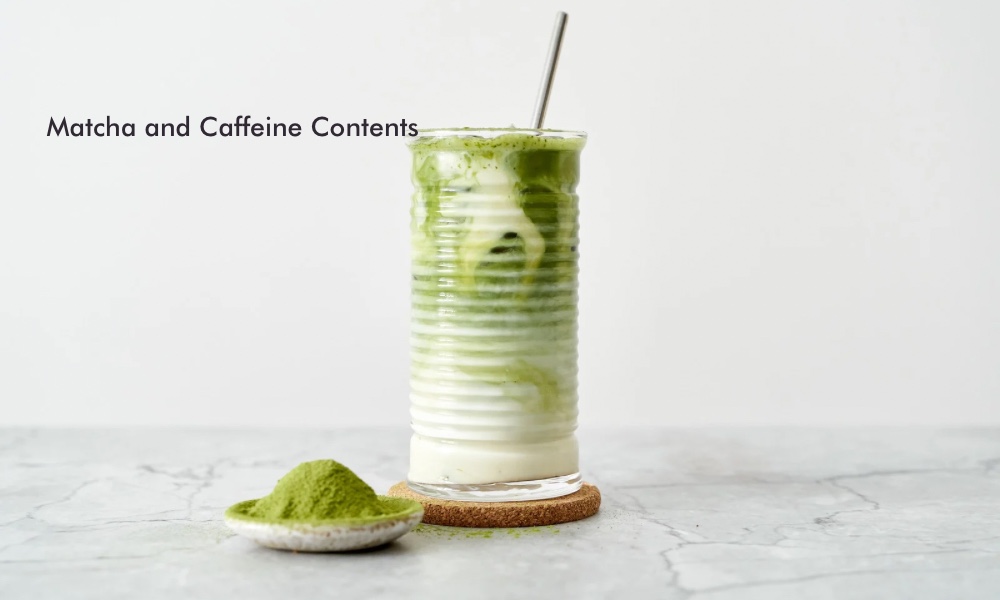There is a quiet alchemy in a bowl of matcha—an emerald-green suspension where tradition, chemistry, and modern mindfulness quietly converge. For those seeking both clarity and calm, matcha’s relationship with caffeine offers nuance far beyond a simple jolt; here, the rhythm of alertness becomes something soft-spoken but enduring. To truly appreciate matcha’s effect, we must look beyond the milligrams, allowing context, craft, and cultural ritual to gently infuse our understanding.
How Much Caffeine Lies in a Cup? Decoding the Numbers with Nuance
Matcha’s Caffeine Content: The Elegant Range
A single serving of matcha—typically two grams of finely milled, shade-grown leaves—contains approximately 30 to 70 milligrams of caffeine. The precise amount dances with subtlety, depending on the cultivar, harvest, and grade. Compare this with the brisk clarity of sencha (roughly 20–30mg per cup), the mellow lift of black tea (30–50mg), or the unambiguous vigor of coffee (80–120mg).
When Powder Becomes Potion: Matcha Is All-Leaf
Unlike conventional green teas, where the leaves steep and are then removed, matcha is consumed whole. It is the leaf in its entirety—stone-ground, vivid, and unfiltered—that enters the body. All the caffeine, antioxidants, and amino acids come along for the ride, lending matcha a certain honest intensity, yet with an unmistakable softness.
This distinction has deep roots. Matcha’s leaves are cultivated under shade, encouraging the accumulation of not only caffeine but also the tranquil compound L-theanine. The tradition is as important as the chemistry: stone grinding produces a powder of almost silk-like texture, capable of being frothed into a billowing jade cloud—a way of honoring the leaf and inviting serenity as much as awakening.
Not All Matcha Is Created Equal
Ceremonial matcha—reserved for meditative whisking and sipping—tends to be higher in caffeine, taken from the youngest, most tender shoots. Culinary matcha, intended for blending or baking, is often milder in both flavor and caffeine strength. Each grade whispers a different story in the cup.
The standard preparation—about one teaspoon (2g) blended with 60–70ml of water heated to 80–85°C—delivers a foam that is at once feather-light and richly evocative. In every sip: bitterness tempered by umami, energy harmonized by grace.
Caffeine in Context: Matcha, Green Tea, Coffee, and Black Tea
| Beverage (1 cup) | Caffeine Content (mg) |
|---|---|
| Matcha (2g) | 30–70 |
| Sencha | 20–30 |
| Black Tea | 30–50 |
| Coffee | 80–120 |
Source: Ministry of Health, Labour and Welfare (Japan)
While matcha’s caffeine can rival that of a strong black tea—and in sheer concentration, approaches coffee—it is experienced differently. The energy it imparts is often described as both lasting and gentle, with a gradual ascent reminiscent of a dawn rather than a midday spotlight.
Green teas like sencha or hojicha tend to offer less caffeine, their virtues lying in soft, toasty comfort. As for coffee, its caffeine enters swiftly and leaves little room for subtlety: a surge, then a fade. Matcha, by comparison, lingers.
The Art and Science of Matcha’s Awakening
The Chemistry of Clarity
Caffeine, that most renowned alkaloid, is a master of stirring the mind to focus, brushing away the cobwebs of sleep. A single bowl of matcha can provide a distinct sense of readiness before work, meditation, or creative endeavor.
Balance and Boundaries
But balance is essential. For some—especially those sensitive to caffeine, pregnant or breastfeeding women, and children—moderation is not just wise, but necessary. Exceeding 400mg per day, according to health authorities such as the World Health Organization, may foster sleeplessness, restlessness, or palpitations. Three to five bowls of matcha daily will keep most adults within gentle bounds, but more diminutive servings allow for playful flexibility in habit.
Why Matcha’s Caffeine Feels Distinct
Unlike the sharp high of coffee, matcha’s awakening is softened by its wealth of L-theanine—an amino acid settled within the delicate leaves. This compound is known to take the edge off caffeine’s stimulation, inviting focused calm rather than nervous energy. Scientific studies increasingly confirm that the duet of caffeine and L-theanine is greater than the sum of its parts: attention sharpens, yet a tranquil afterglow remains.
Further still, matcha is abundant in catechins and fiber, which may slow the absorption of caffeine itself. This gentle unfolding of energy is felt less as a thump and more as a slowly widening ripple—sure, sustained, and serene.
Matcha in Modern Life: Tradition Meets Today
The dual effect, cherished in Japan’s tea ceremony for centuries, is now finding resonance beyond the tatami mat. Whether whisked with practiced artistry or shaken briskly in a travel tumbler, matcha adapts. Its green vibrancy enlivens as a hot bowl, cool latte, or folded into the creamy delight of desserts—though even here, the caffeine lingers, measured and present.
Mindful of one’s own rhythm, there are options: a lighter hand with the scoop, a lower concentration, or a switch to caffeine-free teas—barley, roasted beans, rooibos, or burdock—for those wishing for a gentler afternoon.
The Last Sip: Toward a Thoughtful Matcha Ritual
In every bowl of matcha lies an interplay of chemistry, craft, and contemplation. Caffeine—30 to 70mg per serving—arrives not alone, but accompanied by L-theanine and the wisdom of age-old practices. The result: an alertness that is not overwhelming, but intelligent. A sensation not of abrupt acceleration, but of gradual, harmonious awakening—suitable for both the busy and the still.
To enter into a daily matcha ritual is to attune oneself with both energy and repose, to savor the lingering echo well beyond the final drop. Whether enjoyed in traditional form or tailored to modern taste, matcha invites us to cultivate awareness, sip by sip—a green interlude, refined and enduring.
Note: For specific populations (pregnant, breastfeeding, children), guidelines suggest caution and tailored consumption. Even in the world of green, mindful moderation prevails.



